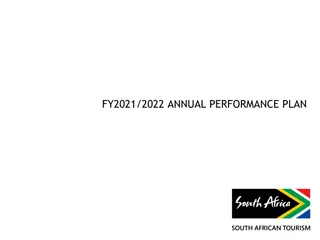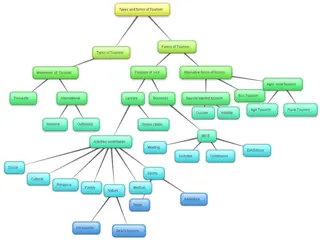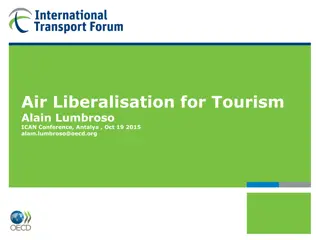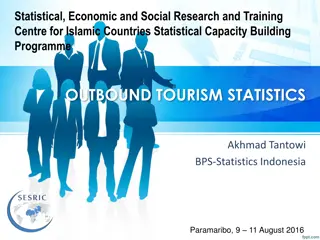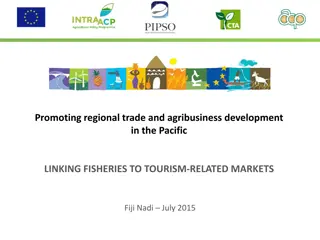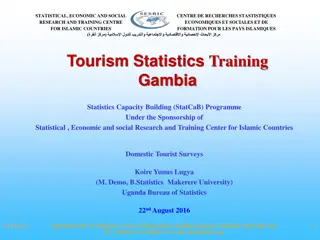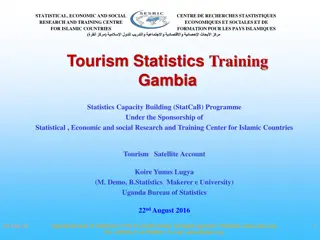Understanding the Three Dimensions of Sustainable Tourism
Sustainable tourism focuses on maximizing positive impacts while minimizing negative ones across environmental, economic, and social dimensions. The environmental dimension includes aspects like natural resources, landscapes, and wildlife. The economic dimension examines financial impacts, while the social dimension considers community well-being and cultural preservation. By addressing all three dimensions, sustainable tourism aims to promote responsible travel practices for the long-term benefit of all stakeholders.
Download Presentation

Please find below an Image/Link to download the presentation.
The content on the website is provided AS IS for your information and personal use only. It may not be sold, licensed, or shared on other websites without obtaining consent from the author. Download presentation by click this link. If you encounter any issues during the download, it is possible that the publisher has removed the file from their server.
E N D
Presentation Transcript
Three Dimensions of Sustainable Tourism Tourism has environmental, economic and social impacts. Sustainable tourism is about maximizing the impacts which are positive and minimizing the negative ones. It seems that the environmental impacts are negative, the economic effects positive, and the social impacts a combination of both. However, it is also important to recognize that there are clear links between the three aspects of tourism the environmental, economic, and social dimensions and these are below
1. Environmental Dimension: To many people, sustainability is about the environment, primarily the natural, physical environment, and its protection. However, there is far more to the environment than just the natural landscape. Let us now move on to look at the five aspects of the environment:
A) The Natural Resources: Tourism makes use of a range of natural resources, and in many cases, the core attraction of a destination s product may be natural resources such as clean air, land, mineral waters, and the water in lakes and seas.
B) The Natural Environment: There are few natural landscape or wilderness areas left in the world. Almost all natural landscapes have been affected to some extent by the actions of man through the centuries. Tourism is only one industry or activity which changes landscapes. The natural landscape represents the core of the tourism product in many areas including natural forests, mountains, and regions which attract tourists because of their rivers and lakes.
C) The Farmed Environment: The farmed environment can cover a diverse range of agricultural systems including agriculture landscapes, man-made forests, and fish farms. D) Wildlife: Wildlife has a number of dimensions such as land-based mammals and reptiles, flora, birds, insects, fish, and marine mammals. Tourism can clearly be very harmful to wildlife through the destruction of habitats, affecting feeding habits, disrupting breeding patterns, fires in woodlands and people picking rare plants
E) The Build Environment: We also need to recognize that, in term of tourism, there are several dimensions to the built environment such as individual buildings and structures, villages and townscapes, transport infrastructure, dams, and reservoirs.
2. Economic Dimension: In the debate over sustainable tourism, the economic dimension is often given relatively scant attention compared to the environmental issues. Tourism is an economic phenomenon because: It is a major industry and foreign currency earner. It is the basis of the growth of many transnational corporations. It accounts for a significant proportion of the annual disposable income.
A) Economic Benefits of Tourism: Tourism contributes to the economy of a country in various ways. Economic benefits of tourism are following as: Job creation Injection of income into the local economy through the multiplier effect. Helping keep the local business viable. Infrastructure development. Attracts the foreign direct investments.
B) Economic Costs of Tourism: There are many economic benefits of tourism as well as costs. Economic costs of the tourism are following as: Many jobs are low paid and seasonal. Opportunity costs. Congestion. The need to invest in expensive infrastructure which may only be required for part of the year. Over-dependence on tourism makes the host economy vulnerable.
3. Social Dimension: The social dimension of tourism has been given less attention in the sustainable tourism debates, than the environmental impacts of tourism. This is because the socio-cultural impacts of tourism usually occur slowly over time in an unspectacular fashion. They are also largely invisible and intangible. The social impact of tourism is usually permanent with little or no opportunity to reverse the changes once it has taken place. When the social impact of sustainable tourism has been considered the focus has normally been upon the host community.
There are a number of factors that determine whether or not the balance of socio-cultural impacts will be positive or negative in a particular location including: The strength and coherence of the local society and culture. The nature of tourism in the resort. The level of economic and social development of the host population in relation to the tourists. The measures were taken by the public sector in the destination to manage tourism in ways which minimize the socio-cultural costs of tourism.





